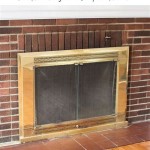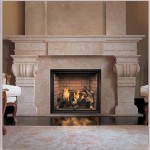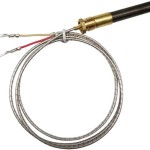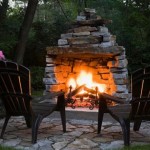San Diego County Outdoor Fireplace Code: A Comprehensive Overview
San Diego County, renowned for its mild climate and outdoor lifestyle, has specific regulations governing the installation and use of outdoor fireplaces. These regulations aim to balance the enjoyment of open-air amenities with public safety concerns, particularly fire prevention and air quality. Understanding these codes is crucial for homeowners and contractors planning to install or modify an outdoor fireplace. This article provides a comprehensive overview of the key aspects of the San Diego County Outdoor Fireplace Code. It is important to note that specific interpretations and enforcement may vary depending on the city or district within the county, so it is always advisable to consult with local authorities for the most up-to-date information.
The primary purpose of the outdoor fireplace code is to minimize the risk of wildfires, which pose a significant threat in San Diego County's dry and often windy conditions. The regulations also aim to control smoke emissions to protect air quality and public health. Failure to comply with these codes can result in fines, mandatory corrective actions, and even legal consequences. Therefore, thorough research and adherence to the stipulated guidelines are essential before commencing any construction or installation.
Clearance Requirements and Setbacks
One of the most critical aspects of the San Diego County Outdoor Fireplace Code pertains to clearance requirements and setbacks. These regulations dictate the minimum distance an outdoor fireplace must be located from structures, property lines, and combustible materials. Specific requirements may vary based on the type of fireplace, fuel used (wood-burning, natural gas, or propane), and the construction of surrounding structures. Generally, a greater distance is required for wood-burning fireplaces due to the increased risk of sparks and embers. For example, a wood-burning fireplace might require a minimum of ten feet clearance from any building, overhang, or vegetation, while a gas-fueled fireplace might have a reduced requirement. The precise distance varies with local ordinances, so it is crucial to consult with your local fire department or building department.
Furthermore, the code specifies setback requirements from property lines. This ensures that the heat and smoke from the fireplace do not negatively impact neighboring properties. These setbacks are particularly important in densely populated areas where properties are close together. It is the homeowner's responsibility to verify property lines accurately and ensure that the fireplace construction adheres strictly to these setback requirements. A professional surveyor can assist in accurately determining property lines if there is any uncertainty.
The type of construction materials used in and around the fireplace also plays a role in determining the clearance requirements. Non-combustible materials, such as concrete, brick, or stone, are generally required for the fireplace structure itself and for the surrounding area within a specified radius. This helps to prevent the spread of fire should sparks or embers escape. Any surrounding decking, fencing, or landscaping must be carefully considered to ensure compliance with the code.
Construction and Materials Standards
The San Diego County Outdoor Fireplace Code also sets forth specific construction and material standards for outdoor fireplaces. These standards aim to ensure the structural integrity and fire resistance of the fireplace. The code typically references established building codes and material standards, such as those published by the International Code Council (ICC) and the American Society for Testing and Materials (ASTM).
For wood-burning fireplaces, the code typically mandates a firebox constructed of fire-resistant materials, such as firebrick or refractory concrete. The firebox must be of sufficient thickness and design to withstand the intense heat generated by the fire. A chimney or flue is also required to vent smoke away from the surrounding area. The chimney must be constructed of non-combustible materials and must extend a certain height above the roofline to ensure proper draft and prevent smoke from blowing back into the property or neighboring properties.
Gas-fueled fireplaces also have specific requirements. These requirements typically involve the proper installation of gas lines and connections, as well as the use of approved gas burners and control systems. The installation must be performed by a licensed professional to ensure safety and compliance with the code. Regular inspections and maintenance of gas-fueled fireplaces are also essential to prevent leaks and other hazards.
The code may also specify requirements for the foundation of the fireplace. The foundation must be stable and capable of supporting the weight of the fireplace structure. Proper drainage is also essential to prevent water damage and erosion. Obtaining necessary permits and undergoing inspections by local building officials will ensure that the contstruction meets the required standards.
Permitting and Inspections
Before commencing any construction or installation of an outdoor fireplace in San Diego County, it is typically necessary to obtain the appropriate permits from the local building department or fire authority. The permitting process involves submitting detailed plans and specifications for the proposed fireplace, including its dimensions, materials, and location on the property. The plans will be reviewed to ensure compliance with the San Diego County Outdoor Fireplace Code and other applicable regulations.
The permitting process typically involves multiple inspections at various stages of construction. These inspections are conducted by building officials to verify that the fireplace is being built according to the approved plans and that it meets all applicable code requirements. Inspections may include verification of the foundation, framing, firebox construction, chimney or flue installation, and gas line connections. Failure to pass an inspection can result in delays and require corrective actions to bring the fireplace into compliance.
It is the homeowner's responsibility to schedule the necessary inspections and ensure that the contractor is aware of the code requirements. Failing to obtain the necessary permits or failing to pass inspections can result in fines, stop-work orders, and even the mandatory removal of the fireplace. Therefore, it is essential to work closely with the local building department and fire authority throughout the process to ensure compliance.
In summary, compliance with the San Diego County Outdoor Fireplace Code is essential for ensuring the safe and responsible enjoyment of outdoor fireplaces. Careful consideration of clearance requirements, construction standards, and permitting procedures is necessary to avoid potential hazards and legal consequences. Consulting with qualified professionals, such as architects, contractors, and engineers, can help ensure that the fireplace is designed and built in accordance with all applicable regulations.
Residential Masonry Fireplaces And Chimneys
Residential Masonry Fireplaces And Chimneys
Residential Masonry Fireplaces And Chimneys

Chapter 10 Chimneys And Fireplaces Residential Code 2024 Upcodes

Chapter 10 Chimneys And Fireplaces Residential Code 2024 Upcodes

Fire Pit Installation And Outdoor Setup San Diego County

Professional Gas Fire Pit Servicing In San Diego County Ca

Building Forms And Handouts
Residential Decks

Custom Outdoor Fire Pit Installation In San Diego
Related Posts








